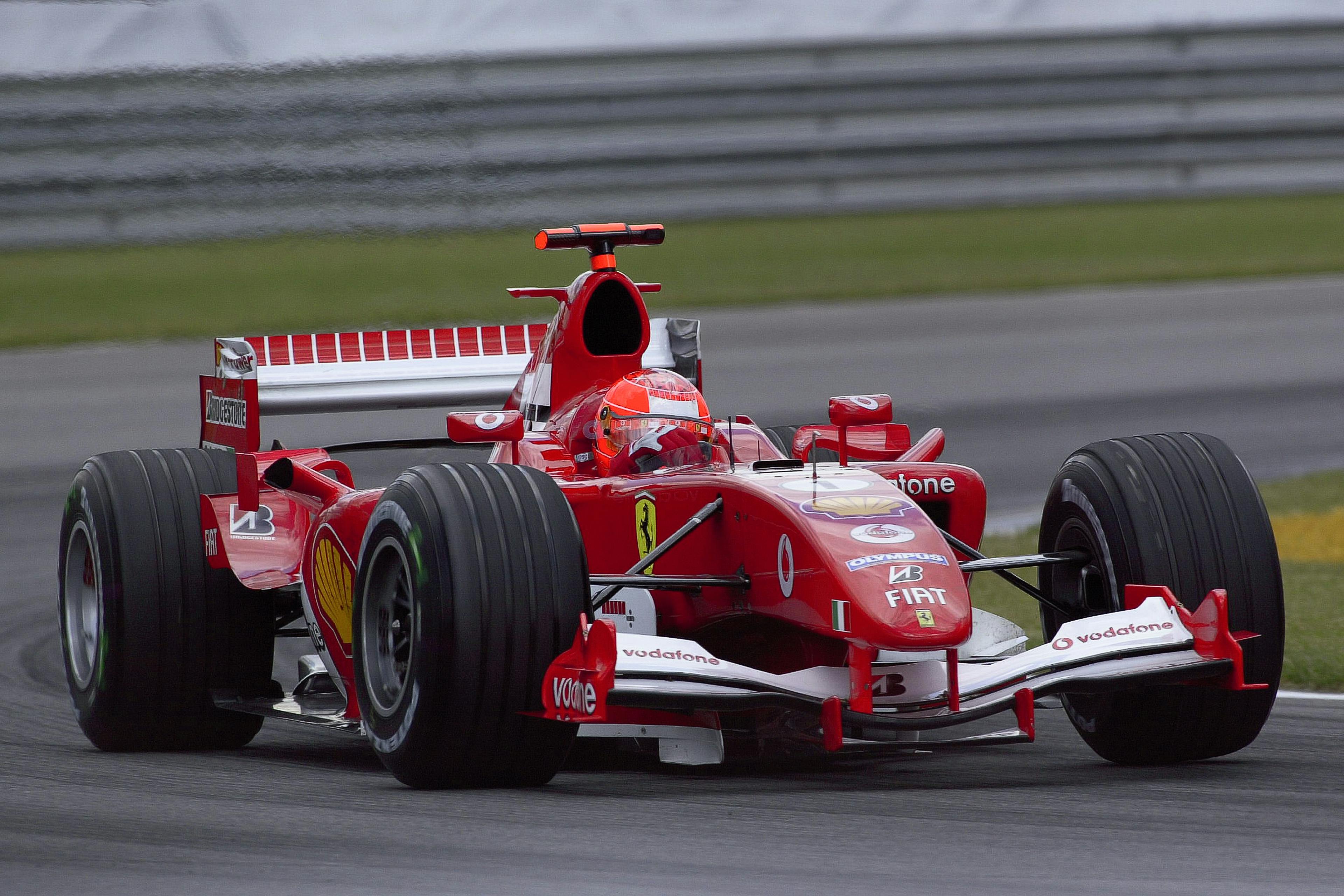Few names in motorsport command the reverence and emotional pull of the Scuderia Ferrari. As the oldest and most successful team in Formula 1 history, Ferrari is not just a team, it is the soul of the sport. Like the great Enzo Ferrari once said : “Ask a child to draw a car and certainly he will draw it in red”. From its first Grand Prix in 1950 to the high-tech battles of the 21st century, Ferrari has embodied passion, innovation and fierce competition on the global racing stage.
The Early Years (1950s): Birth of a Legend
Ferrari made its official Formula 1 debut in the inaugural 1950 season, missing only the first race of the season in the United Kingdom. Just a year later, José Froilán González gave the Prancing Horse its first F1 victory at the 1951 British Grand Prix, ending Alfa Romeo’s dominance.
The breakthrough came in 1952 and 1953, when Alberto Ascari won back-to-back World Championships. His disciplined driving and technical skill laid the foundation for Ferrari’s rise as a serious force in Formula 1. The “Godfather”, Juan Manuel Fangio won his fourth world championship title in 1956 with the Scuderia Ferrari. Mike Hawthorn was the last Ferrari driver to win a driver’s championship in the 1950’s, by winning the 1958’s Formula One title.
Between Glory and Tragedy (1960s)
The 1960s were a time of both triumph and heartbreak. Phil Hill won the 1961 Driver World Championship. John Surtees, a former motorcycle champion, delivered Ferrari the second and last world championship of the decade in 1964, becoming the only man to win world titles on both two and four wheels.
However, this era was also marked by the tragic loss of several drivers, including Lorenzo Bandini and Wolfgang von Trips, reflecting the dangerous nature of the sport at the tim The Lauda Years (1970s)
The Lauda Years (1970s)
In the mid-1970s, Ferrari experienced a renaissance under the leadership of Enzo Ferrari and the technical genius of Mauro Forghieri. The recruitment of Austrian driver Niki Lauda proved decisive.
Lauda won the World Championship in 1975 and again in 1977, overcoming a near-fatal crash at the Nürburgring in 1976. He came back during the 1976 season to defend his title but got defeated by James Hunt during the last race of the season at the Japanese Grand Prix. His rivalry with the British driver became legendary, dramatized in the 2013 film Rush. In 1979, Jody Schekter won Ferrari’s last driver championship in the 20th century.
The Turbulent ‘80s and ‘90s
The 1980s were a mixed bag. While Ferrari had competitive cars and great drivers like Gilles Villeneuve, Didier Pironi, and Michele Alboreto, the team struggled to clinch another world title. Villeneuve, a fan favorite, died tragically in 1982, deepening the emotional connection between the team and its supporters.
The 1990s saw iconic names like Alain Prost and Jean Alesi drive for Ferrari, but despite flashes of brilliance, the team could not break the dominance of McLaren and Williams.
The Schumacher Dynasty (2000–2004)
After a 21-year title dry-spell, Ferrari began a golden era in the early 2000s. By recruiting Michael Schumacher in 1996 and rebuilding the entire Ferrari Team, the golden era arrived little by little. Led by Schumacher, and backed by technical masterminds like Ross Brawn, Rory Byrne, and the Team Principles Jean Todt, Ferrari won 5 consecutive Drivers' Championships from 2000 to 2004 and 6 consecutive Constructors' Championships from 1999 to 2004.
Schumacher’s dominance, especially in the F2002 and F2004, redefined modern F1 and elevated Ferrari into a global icon far beyond motorsport.
Post-Schumacher Era: Highs, Lows, and Rebuilding (2005–2019)
Following Schumacher’s first retirement in 2006, Ferrari remained competitive. Kimi Räikkönen won the 2007 title by a single point, bringing home Ferrari’s most recent Drivers' Championship. In 2008, Felipe Massa almost won the Driver’s championship but Hamilton overtook Timo Glock in the last corner, of the last lap of the last race of the championship.
The next decade was characterized by near-misses and internal struggles with Fernando Alonso in 2010 and 2012 and Sebastian Vettel in 2017 and 2018 came close to titles, but Mercedes and Red Bull's dominance proved difficult to break.
Modern Era: The Fight Back (2020–Present)
In recent years, Ferrari has focused on youth and long-term growth. The team had a talented duo of Charles Leclerc and Carlos Sainz Jr. while investing heavily in infrastructure and technology.
The 2022 regulation changes offered Ferrari a fresh start, and the F1-75 car showed promise, though consistency and strategic errors remained a challenge. The goal remains clear: restore Ferrari to championship-winning form.
In 2025, the addition of Lewis Hamilton to the team, replacing Carlos Sainz Jr., showed the desire of the Scuderia Ferrari to win as soon as possible and to make history by offering the British driver the opportunity to overtake Michael Schumacher to become the one and only driver with 8 Drivers Championship title in the sport.
 Conclusion: More Than Just a Team
Conclusion: More Than Just a Team
Ferrari is Formula 1’s beating heart. With a record 247 Grand Prix victories, 16 Constructors' Championships, and 15 Drivers’ Titles, Ferrari’s impact transcends trophies. It represents national pride for Italy, a symbol of relentless pursuit of excellence and an emotional anchor for millions of fans around the world.
In an ever-evolving sport, Scuderia Ferrari continues to race not just for glory, but for the legacy. As long as Formula 1 exists, the Prancing Horse will charge on.

